1. Sung H, Ferlay J, Siegel RL, Laversanne M, Soerjomataram I, Jemal A, et al. Global cancer statistics 2020: GLOBOCAN estimates of incidence and mortality worldwide for 36 cancers in 185 countries. CA Cancer J Clin. 2021; 71:209–249. PMID:
33538338.

2. Kang MJ, Jung KW, Bang SH, Choi SH, Park EH, Yun EH, et al. Cancer statistics in Korea: incidence, mortality, survival, and prevalence in 2020. Cancer Res Treat. 2023; 55:385–399. PMID:
36915245.

3. Jo MW, Seo W, Lim SY, Ock M. The trends in health life expectancy in korea according to age, gender, education level, and subregion: using quality-adjusted life expectancy method. J Korean Med Sci. 2018; 34(Suppl 1):e88. PMID:
30923491.

4. Park SH, Kang MJ, Yun EH, Jung KW. Epidemiology of gastric cancer in Korea: trends in incidence and survival based on Korea central cancer registry data (1999-2019). J Gastric Cancer. 2022; 22:160–168. PMID:
35938363.

5. Takeuchi D, Koide N, Suzuki A, Ishizone S, Shimizu F, Tsuchiya T, et al. Postoperative complications in elderly patients with gastric cancer. J Surg Res. 2015; 198:317–326. PMID:
26033612.

6. Sakurai K, Muguruma K, Nagahara H, Kimura K, Toyokawa T, Amano R, et al. The outcome of surgical treatment for elderly patients with gastric carcinoma. J Surg Oncol. 2015; 111:848–854. PMID:
25753213.

7. Joharatnam-Hogan N, Shiu KK, Khan K. Challenges in the treatment of gastric cancer in the older patient. Cancer Treat Rev. 2020; 85:101980. PMID:
32065879.

8. Zhou CJ, Chen FF, Zhuang CL, Pang WY, Zhang FY, Huang DD, et al. Feasibility of radical gastrectomy for elderly patients with gastric cancer. Eur J Surg Oncol. 2016; 42:303–311. PMID:
26710992.

9. Dindo D, Demartines N, Clavien PA. Classification of surgical complications: a new proposal with evaluation in a cohort of 6336 patients and results of a survey. Ann Surg. 2004; 240:205–213. PMID:
15273542.
10. Lee JH, Kim JG, Jung HK, Kim JH, Jeong WK, Jeon TJ, et al. Clinical practice guidelines for gastric cancer in Korea: an evidence-based approach. J Gastric Cancer. 2014; 14:87–104. PMID:
25061536.

11. Japanese Gastric Cancer Association. Japanese gastric cancer treatment guidelines 2014 (ver. 4). Gastric Cancer. 2017; 20:1–19.
12. Berger NA, Savvides P, Koroukian SM, Kahana EF, Deimling GT, Rose JH, et al. Cancer in the elderly. Trans Am Clin Climatol Assoc. 2006; 117:147–156. PMID:
18528470.
13. Information Committee of the Korean Gastric Cancer Association. Korean gastric cancer association-led nationwide survey on surgically treated gastric cancers in 2019. J Gastric Cancer. 2021; 21:221–235. PMID:
34691807.
14. Takeshita H, Ichikawa D, Komatsu S, Kubota T, Okamoto K, Shiozaki A, et al. Surgical outcomes of gastrectomy for elderly patients with gastric cancer. World J Surg. 2013; 37:2891–2898. PMID:
24081528.

15. Wakahara T, Ueno N, Maeda T, Kanemitsu K, Yoshikawa T, Tsuchida S, et al. Impact of gastric cancer surgery in elderly patients. Oncology. 2018; 94:79–84. PMID:
29045948.

16. Kim JH, Chin HM, Jun KH. Surgical outcomes and survival after gastrectomy in octogenarians with gastric cancer. J Surg Res. 2015; 198:80–86. PMID:
26095423.

17. Jiang N, Deng JY, Ding XW, Zhang L, Liu HG, Liang YX, et al. Effect of complication grade on survival following curative gastrectomy for carcinoma. World J Gastroenterol. 2014; 20:8244–8252. PMID:
25009399.

18. Baiocchi GL, Giacopuzzi S, Reim D, Piessen G, Costa PM, Reynolds JV, et al. Incidence and grading of complications after gastrectomy for cancer using the GASTRODATA registry: a European retrospective observational study. Ann Surg. 2020; 272:807–813. PMID:
32925254.

19. Chen E, Senders ZJ, Hardacre J, Kim J, Ammori J. Perioperative outcomes and survival of octogenarians undergoing curative resection for esophagogastric adenocarcinoma. J Surg Oncol. 2020; 121:1015–1021. PMID:
32090338.

20. Tan E, Lam S, Han SP, Storey D, Sandroussi C. Perioperative outcomes and survival in elderly patients aged ≥75 years undergoing gastrectomy for gastric cancer: an 18-year retrospective analysis in a single Western centre. Langenbecks Arch Surg. 2021; 406:1057–1069. PMID:
33770264.

21. Lee SR, Kim HO, Yoo CH. Impact of chronologic age in the elderly with gastric cancer. J Korean Surg Soc. 2012; 82:211–218. PMID:
22493761.

22. Kim TH, Kim IH, Kang SJ, Choi M, Kim BH, Eom BW, et al. Korean practice guidelines for gastric cancer 2022: an evidence-based, multidisciplinary approach. J Gastric Cancer. 2023; 23:3–106. PMID:
36750993.

23. Jo JC, Baek JH, Koh SJ, Kim H, Min YJ, Lee BU, et al. Adjuvant chemotherapy for elderly patients (aged 70 or older) with gastric cancer after a gastrectomy with D2 dissection: a single center experience in Korea. Asia Pac J Clin Oncol. 2015; 11:282–287. PMID:
25856172.

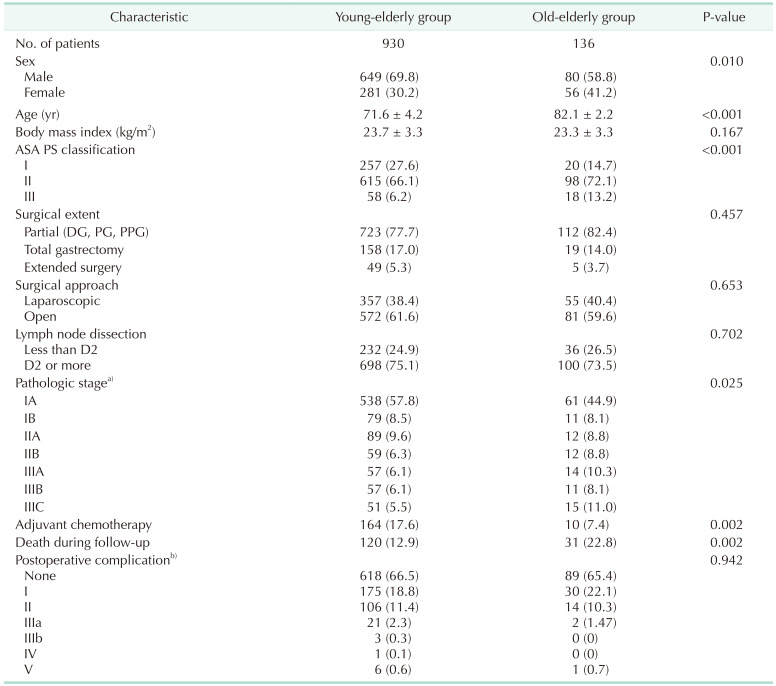
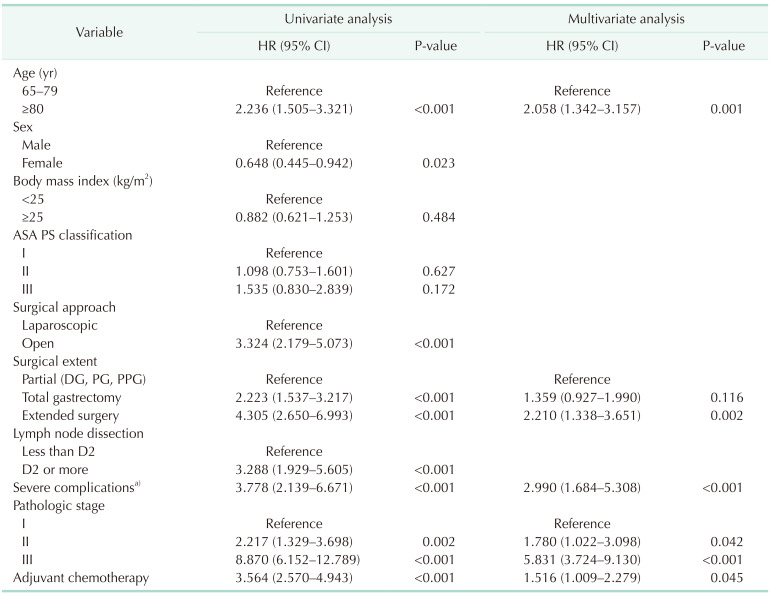
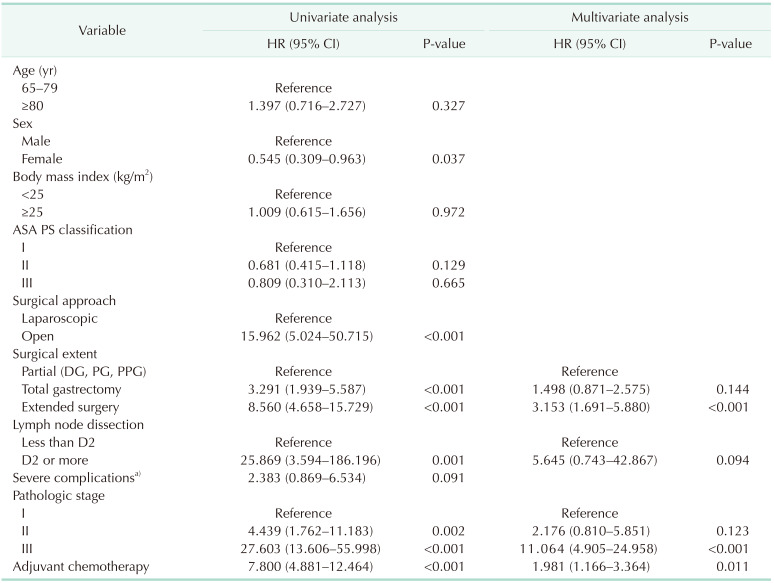




 PDF
PDF Citation
Citation Print
Print



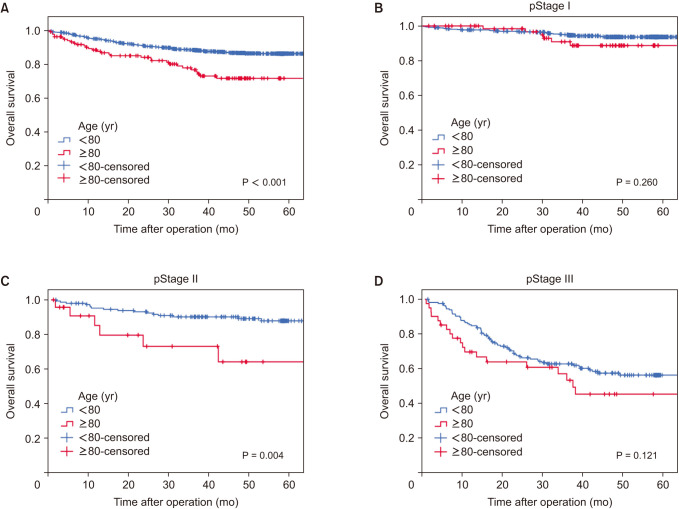
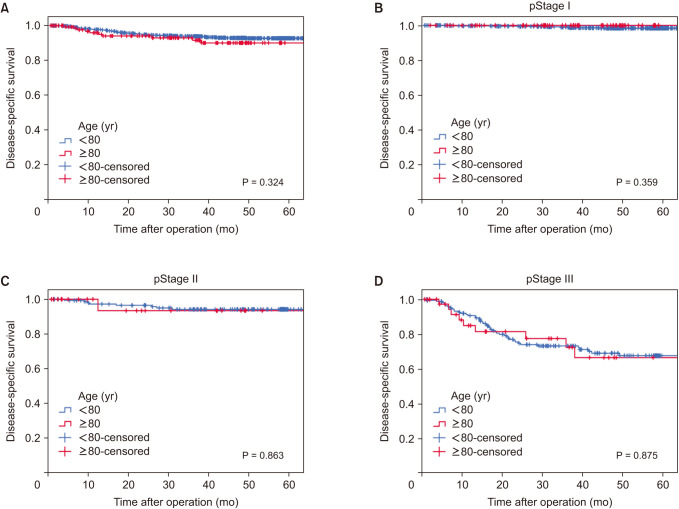
 XML Download
XML Download